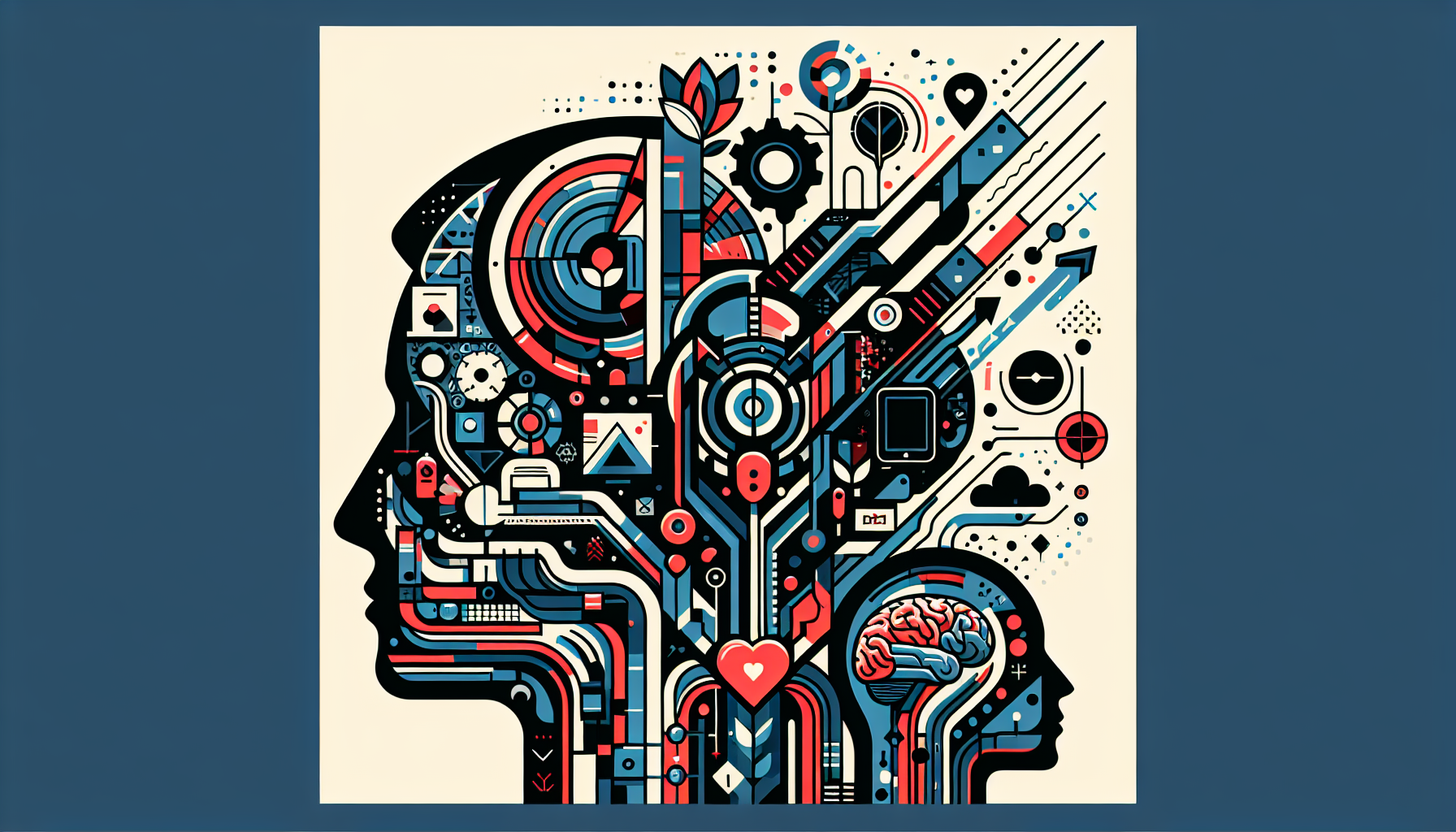
Leveraging Digital Solutions for Wellbeing
The power of technology has been harnessed in various domains, including the realm of health and wellness. Digital platforms and tools are now playing a pivotal role in supporting mental health and enhancing employee wellness.
Table of Contents
Digital Interventions for Mental Health
In the realm of mental health, digital interventions have emerged as a game-changer. Technological devices such as mobile phones, computers, and the internet can provide digital interventions for various mental health-related issues. They serve as regular contact points with professionals, remind patients to take medication, and provide brain training exercises that help alleviate the symptoms of various mental health disorders.
These interventions have shown great promise for numerous mental health disorders, especially for young people at risk of psychological problems such as anxiety, depression, and stress due to academic and social pressures (News-Medical).
In social work settings, technology-based interventions allow for improved patient conditions and compliance monitoring, with benefits that include enhanced remote communication and potential application in disease diagnosis and treatment (News-Medical).
Technology and Employee Wellness
The advent of the remote work era, accelerated by the recent global pandemic, has significantly impacted the landscape of employee wellness. Technology now plays an even more pivotal role in ensuring employee well-being in this new world of work.
Technological advancements provide tools and platforms for promoting employee wellness in remote work. This includes virtual communication tools, health and fitness apps, digital wellness platforms, and AI-driven personal health advisors.
The use of these technology-based solutions has made it easier for employees to stay healthy, manage their time effectively, and stay connected with their colleagues. For more insights on leveraging technology for productivity, check out our articles on digital tools for time management, digital solutions for productivity, improving efficiency with technology, and improving productivity with digital tools.
In conclusion, leveraging technology for wellbeing is not just about using digital tools to improve productivity. It’s about harnessing the power of digital solutions to support mental health, enhance employee wellness, and ultimately, improve the quality of life.

Mental Health Applications
The rise of digital solutions has ushered in a new era of mental health care. These applications leverage technology to provide interventions for various mental health-related issues, offering an array of benefits such as regular contact with professionals, medication reminders, and brain training exercises.
Promising Digital Interventions
Digital interventions have shown great promise for numerous mental health disorders. They are particularly effective in aiding young people at risk of psychological problems such as anxiety, depression, and stress, often resulting from academic and social pressures. These digital solutions provide a convenient and accessible platform for individuals to seek help and guidance, thereby improving their wellbeing and productivity.
Furthermore, technology-based interventions allow for enhanced patient monitoring in social work settings, leading to improved conditions and compliance. These benefits extend to remote communication, disease diagnosis, and treatment, further exemplifying the potential of leveraging technology for wellbeing. For more insights, explore our articles on digital tools for time management and improving productivity with digital tools.
Challenges in Elderly Engagement
Despite the promising advances in digital mental health interventions, there remain challenges in engaging certain demographics, particularly the elderly. A significant subset of older individuals rarely engage in online activity and do not regularly use devices such as tablets or smartphones. This generational gap in technology use may leave them vulnerable when it comes to mental health interventions (News-Medical).
As a result, it’s crucial to develop strategies to bridge this gap and ensure that mental health applications are accessible and user-friendly for people of all ages. This might include simplified user interfaces, comprehensive user guides, and tech support for those less familiar with digital devices.
In conclusion, while the rise of digital interventions has brought about significant benefits for mental health care, it’s essential to address the existing challenges to ensure these tools are accessible to all. These advancements are just one aspect of how we are improving efficiency with technology and leveraging digital solutions for wellbeing.

Employee Well-being Tools
In the digital age, a variety of tools are available to promote employee wellbeing. These range from virtual communication platforms to health and fitness apps, and digital wellness platforms. Each of these tools serves a unique purpose in enhancing the physical and mental health of employees, playing a crucial role in the overall productivity and efficiency of the workforce.
Virtual Communication Platforms
Virtual communication platforms have emerged as a key tool in maintaining employee wellbeing, especially in the context of remote work. These platforms allow for consistent and effective communication between team members, fostering a sense of community and cohesion. Regular contact with colleagues and superiors can help alleviate feelings of isolation and stress, contributing to better mental health. Moreover, these platforms can facilitate regular check-ins and discussions about workload, helping to manage stress and prevent burnout.
Health and Fitness Apps
Health and fitness apps are another powerful tool for promoting employee wellbeing. These apps can motivate employees to maintain a healthy lifestyle by tracking their activity, providing workout suggestions, and offering nutrition advice. They can also be used to organize company-wide fitness challenges, fostering a culture of health and wellness.
For more on how digital tools can boost productivity and efficiency, check out our articles on digital tools for time management and improving efficiency with technology.
Digital Wellness Platforms
Digital wellness platforms offer a comprehensive approach to employee wellbeing. These platforms offer resources for physical health, mental health, nutrition, sleep, stress management, and more. They provide personalized wellness plans, track progress, and offer insights and recommendations for employees.
Such platforms can be particularly useful in larger organizations, where personalizing health and wellness programs for each employee can be a challenge. By leveraging technology, companies can offer a range of resources and tools to support their employees’ diverse needs.
In summary, the integration of digital solutions into employee wellbeing strategies can result in improved mental health, increased productivity, and a healthier work environment. To explore more about improving productivity with digital tools, read here.

Success Stories in Employee Wellness
In the quest for improved employee productivity and wellbeing, many companies are successfully leveraging technology for wellbeing. Here are some success stories that highlight the effectiveness of such initiatives.
TechCo’s Holistic Wellness Program
TechCo, a leading technology company, adopted a holistic wellness program that encompassed exercise classes, mindfulness workshops, and mental health resources. They witnessed a significant reduction in absenteeism and an increase in employee retention, leading to improved overall engagement.
This case illustrates how a comprehensive approach to wellness, aided by digital solutions, can significantly impact employee morale and productivity. For more information on similar tools, explore our resources on digital solutions for productivity (Corporate Wellness Magazine).
PharmaCorp’s Health Challenge
PharmaCorp launched a health challenge that resulted in significant improvements in employees’ overall health metrics. This included reduced body mass index, decreased cholesterol levels, and increased energy levels.
The challenge also fostered camaraderie and team spirit among employees, promoting a positive work environment. This case underscores the power of technology in driving healthy competition and enhancing employee wellbeing.
FinServe’s Financial Wellness Program
FinServe, a financial services firm, implemented a financial wellness program that included educational workshops on budgeting and retirement planning, one-on-one consultations. This initiative significantly alleviated financial stress among employees, enhancing financial literacy, reducing anxiety, and increasing productivity.
RetailCo’s Work-Life Balance Initiatives
RetailCo, a large retail chain, implemented initiatives focused on work-life balance. By offering flexible work arrangements and opportunities for personal development and wellness activities, they saw a substantial decrease in employee burnout and an increase in job satisfaction.
These initiatives resulted in improved mental health and enhanced productivity among employees. For more about how digital tools can aid in time management and work-life balance, explore our resources on digital tools for time management.
ManufacturingCo’s Healthy Eating Campaign
ManufacturingCo promoted healthy eating habits among employees by revamping cafeteria offerings. This initiative led to a positive shift in employees’ eating habits and overall wellbeing, an increase in productivity, decreased absenteeism, and a reduction in healthcare costs associated with diet-related illnesses.
This example highlights how technology can be leveraged to promote healthy habits, leading to a healthier and more productive workforce.
These success stories illustrate the impact of leveraging technology for wellbeing, demonstrating how digital solutions can enhance employee productivity and wellbeing in various ways.

AI in Improving Workplace Wellbeing
Artificial Intelligence (AI) plays a crucial role in enhancing workplace wellbeing, offering innovative solutions for boosting productivity, fostering team collaboration, and even influencing office design. By leveraging technology for wellbeing, companies can create a more sustainable and positive work environment.
Predictive Analytics for Productivity
AI-enabled wearable tools, like fitness trackers, utilize machine learning algorithms and natural language processing to assess employee data. These tools can provide cognitive insights, improving predictive analytics for work behaviors by identifying patterns in behavior, speech, and work modes that may be unhealthy or detrimental to productivity (Entrepreneur).
For instance, these devices can detect if an employee is struggling with productivity or happiness at work, enabling HR and management teams to intervene and provide necessary support. This proactive approach to employee wellbeing can significantly enhance job performance and overall satisfaction. Learn more about improving efficiency with technology here.
Enhancing Team Collaboration
AI can also facilitate healthier workplace relationships by providing insights for creating cohesive and innovative team dynamics. Tools like Etch, an AI-led contact manager, can offer intelligent information on employee progress, roles, and projects. AI can track and assess how well team members collaborate, helping to increase predictive power in team collaboration and innovation, leading to a healthier work culture (Entrepreneur).
Not only does this improve team productivity, but it also fosters a positive and supportive work culture, contributing to employee wellbeing. Explore more on improving productivity with digital tools here.
AI-Enhanced Office Design
Workplace design is also being revolutionized by AI, with a focus on improving physical and mental health. AI can assess mood through data and adjust environmental stimuli like lighting, automate systems for plant care, and monitor movements and speech patterns for safety. The incorporation of AI in office design can help employees determine how they work best with real-time data and updates, contributing to overall well-being in the workplace.
This means that companies can create personalized, open, and limitless spaces that promote productivity, transparency, and safety, enhancing the overall employee experience.
AI’s impact on workplace wellbeing is significant, disrupting traditional methods and integrating various innovations such as workforce monitoring, trackers, digital platforms, and occupational health and safety technologies. These technologies capture employee data and actively engage with them, showcasing the enormous potential for AI to enhance employee well-being and productivity.

Wearable Devices for Personalized Healthcare
Among the numerous digital solutions contributing to wellbeing, wearable devices stand out for their personalization and accessibility. They’re transforming healthcare by enabling individuals to monitor their health and wellbeing more closely and conveniently.
Growth of Wearable Device Market
The global market for wearable devices is booming, with its size expected to exceed US$ 380.5 billion by 2028. This growth makes wearable devices increasingly affordable to mass customers, with fitness trackers available for just US$20 on platforms like Amazon. The expanding market indicates a growing public interest in leveraging technology for wellbeing.
Applications in Healthcare
Wearable devices are emerging as the next frontier for personalized healthcare, leveraging the Internet of Things to sense, collect, and upload a wide range of physiological data (California Management Review). Their applications in healthcare are diverse and expanding, ranging from monitoring health and physical training to alerting users to severe medical conditions.
These devices can track heart rate, calories burned, step counts, blood pressure, exercise time, and physical strain. They’re expected to forecast changes in health, mood, stress, measure blood alcohol content, athletic performance, heart condition, and age-related diseases.
Adoption and Future Trends
The Covid-19 pandemic has accelerated the adoption of wearable technology in healthcare, with over 20% of the US population expected to own wearable technologies in the next few years. Wearable ECG monitors have become medically viable, helping users track their heart rhythm, rate, and other vital health conditions, including blood pressure.
However, despite the comfort and convenience offered by wearable devices, they pose threats related to health risks, privacy, and security. Concerns include data collection, storage, unclear privacy policies, and potential vulnerabilities to hacking. These challenges pose obstacles to workplace usage due to security and privacy issues (California Management Review).
The future of wearable devices in healthcare is promising, but considerations around privacy and security will guide their adoption and usage. As we continue to explore the potential of leveraging technology for wellbeing, wearable devices will undoubtedly play a significant role.


